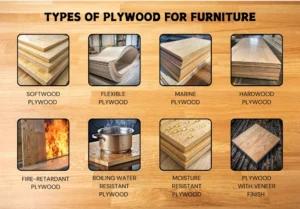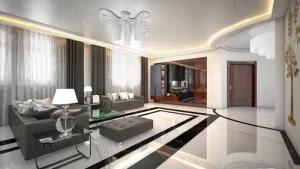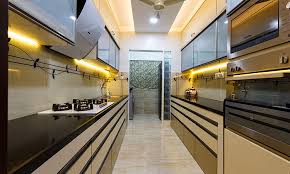The kitchen has always been the soul of a home, but in today’s world, it’s more than a place to cook. It’s where lifestyle meets design, where energy flows, and where the harmony of elements can impact health, relationships, and prosperity. In modern interior design, incorporating Vastu principles isn’t just about tradition—it’s about creating a space that works with natural energy. And in the kitchen, the most critical balance to maintain is between fire and water.
Fire and Water: Understanding the Dynamic
In Vastu Shastra, the kitchen represents a delicate dance between two powerful elements:
Fire (Agni): The stove, oven, and other cooking appliances are the hearth of the home. Fire symbolizes energy, transformation, and vitality. Too much fire without balance can create tension or disrupt harmony.
Water (Jal): The sink, refrigerator, and water purifiers bring the calming, nourishing energy of water. Water represents prosperity, emotional balance, and wealth. Misalignment with fire can create stagnation or imbalance in both health and finances.
Balancing these opposing forces is the key to a kitchen that not only looks beautiful but also supports a positive atmosphere in your home.
After you balance the stove and sink as per Vastu, you can quickly share your kitchen reveal on Instagram using the Instagram Post Generator.
Direction Matters
In Vastu, orientation is crucial. Modern kitchens must respect both practicality and energy flow:
Southeast (Agni Kon): The ideal spot for stoves and cooking appliances, as this zone is ruled by fire. Positioning the stove here naturally aligns with energy flows, ensuring vitality and enthusiasm in the household.
Northeast (Ishaan): Best suited for water-related areas like sinks and water purifiers. This placement keeps the flow of wealth and emotional balance steady.
Northwest (Vayavya): This is a secondary option for kitchen placement. It’s governed by air, which can help neutralize the natural tension between fire and water if southeast isn’t possible.
Placement Principles for Modern Kitchens
Balancing fire and water isn’t just about direction—it’s about positioning:
Stove Placement: The cook should ideally face east while preparing meals. Avoid placing the stove directly opposite the sink to prevent conflict between fire and water energies.
Sink and Water Appliances: Locate these in the northeast or north zones. Keeping water appliances away from the stove ensures a smooth flow of positive energy.
Refrigerators: Best placed in the north or northwest, away from direct heat sources.
Kitchen Islands and Counters: In open-plan kitchens, ensure that fire and water elements are not directly aligned. If they must face each other, use a decorative partition or plant as a subtle energy buffer.
Colors and Materials for Harmony
Color and material choices can reinforce the balance between fire and water:
Fire Zones: Use warm tones like red, orange, or mustard. These energize the space and stimulate appetite and vitality.
Water Zones: Cool shades like blue, green, or white promote calm, emotional balance, and wealth.
Materials: Granite or quartz countertops work well with both elements. Wooden cabinets add warmth and grounding energy, bridging fire and water naturally.
Lighting and Ventilation
A kitchen must breathe. Proper ventilation, natural light, and airflow are non-negotiable. Exhaust fans, skylights, and large windows not only improve comfort but also enhance the positive energy flow, making fire and water work together rather than against each other.
Modern Design Meets Ancient Wisdom
Contemporary kitchens are increasingly open, airy, and multifunctional. This design flexibility allows Vastu principles to be applied creatively:
L-shaped or U-shaped kitchens naturally separate cooking and water zones.
Indoor plants near water zones can amplify prosperity and calm energy.
Small decorative lamps or accent lighting in fire zones strengthen warmth and vitality.
By integrating these subtle Vastu adjustments into modern kitchen design, you create a space that supports health, harmony, and prosperity without compromising on style or functionality.
The Takeaway
A modern kitchen that respects Vastu principles is not about rigid rules—it’s about smart, intentional design. By strategically balancing fire and water elements, you transform your kitchen into a space that energizes, nourishes, and harmonizes your home.
At Design Within, we believe in blending the timeless wisdom of Vastu with contemporary design trends, creating kitchens that are not only stunning but also energetically aligned and inviting.
FAQ's
The southeast corner (Agni Kon) is ideal for the kitchen, as it aligns with the fire element. Northeast is best for water-related areas like sinks
No, placing the stove directly opposite the sink creates a fire-water clash. They should be positioned at separate ends or with a partition.
Warm colors like red, orange, or yellow suit fire zones, while cool colors like blue, green, or white are ideal for water zones.
Use proper placement: stove in southeast, sink in northeast. Consider partitions, plants, or decorative items to separate energy zones.
According to Vastu principles, balanced fire and water energies can enhance positivity, improve health, and support financial stability in the home.





